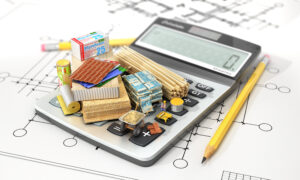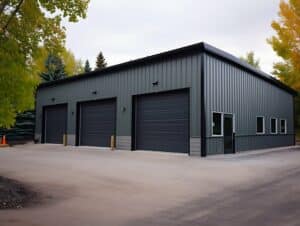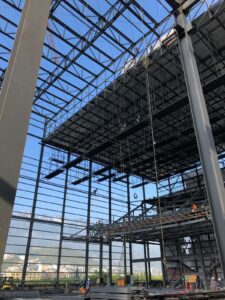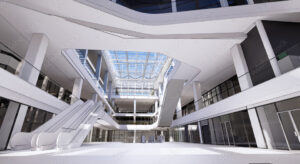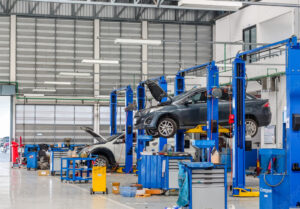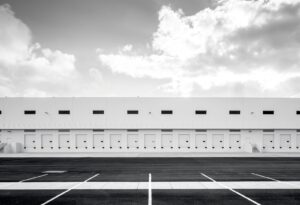In recent years, indoor football fields have risen in popularity with a corresponding growth rentals for these facilities as well. This is revolutionizing the way the game is played and experienced.
These state-of-the-art facilities offer a range of benefits for both players and spectators alike.
This article explores the various aspects of indoor football field buildings, from their evolution and key features to their role in enhancing player performance and safety.
Additionally, we delve into the design elements, sustainability practices, and future trends in this rapidly growing sector.
Table of Contents:
- Understanding Indoor Football Field Buildings
- The Importance of State-of-the-Art Facilities
- Design Elements of Indoor Football Field Buildings
- The Role of Sustainability in Indoor Football Field Buildings
- Considering an Indoor Football Field Rental
- Future Trends in Indoor Football Field Buildings
- Conclusion
- Frequently Asked Questions
Understanding Indoor Football Field Buildings
Indoor football field buildings have come a long way since their early inception. Originally designed to cater to the needs of athletes during inclement weather or in regions with limited outdoor space, these buildings have evolved into much more. Nowadays, they serve as multipurpose facilities, providing comfortable and controlled environments for training, competition, and entertainment.
But let’s take a closer look at the fascinating evolution of indoor football field buildings. These structures have undergone significant advancements over the years, transforming from simple structures with basic amenities to cutting-edge complexes equipped with state-of-the-art technology.
Architects and designers continue to push the boundaries of innovation, creating stunning architectural marvels that seamlessly integrate with their surroundings.
The Evolution of Indoor Football Field Buildings
When indoor football field buildings first emerged, they were primarily utilitarian. Their main purpose was to shield athletes from harsh weather conditions, ensuring that games and training sessions could proceed regardless of rain, snow, or extreme temperatures.
However, as the demand for these facilities grew, so did the need for more versatile and aesthetically pleasing designs.
Today, indoor football field buildings have become architectural wonders, captivating spectators and athletes alike. These structures are no longer mere shelters; they are works of art that combine functionality with beauty. With their sleek lines, expansive windows, and innovative materials, they have become iconic landmarks in many cities around the world.
Did You Know?
The first football game to be played indoors was in 1902 at Madison Square Gardens in New York City. Played on a 70-yard by 35-yard field.
Key Features of Modern Indoor Football Field Buildings
Modern indoor football field buildings boast an array of features that set them apart from traditional outdoor fields. Let’s explore some of these remarkable features:
Weatherproof construction
These buildings are designed to withstand the harshest of weather conditions, ensuring that games and training sessions can proceed without any interruptions. Rain or shine, athletes can focus on their performance without worrying about the elements.
Advanced lighting systems
To create an optimal playing environment, indoor football field buildings are equipped with lighting systems that mimic natural daylight. This not only enhances visibility for players but also creates a vibrant atmosphere for spectators, making every game a truly immersive experience.
Temperature and humidity control
Maintaining consistent playing conditions is crucial for athletes’ performance. Indoor football field buildings are equipped with advanced climate-control systems, allowing for precise regulation of temperature and humidity. This ensures that players can perform at their best, regardless of the weather outside.
Spacious seating areas
Spectators are an integral part of any sporting event, and indoor football field buildings provide them with comfortable seating arrangements and excellent sightlines. Whether it’s cheering for their favorite team or enjoying the action up close, spectators can immerse themselves in the game with ease.
Ample locker room facilities
Teams and their coaching staff require top-notch amenities to prepare for games and training sessions. Indoor football field buildings offer spacious and well-equipped locker rooms, complete with state-of-the-art facilities. From modern showers to customized storage spaces, these facilities cater to the unique needs of athletes and ensure they are ready to give their best performance.
As the demand for indoor football field buildings continues to grow, architects and designers are constantly pushing the boundaries of what is possible. With each new project, they strive to create spaces that not only meet the functional needs of athletes but also inspire and captivate all who enter.
The future of indoor football field buildings is undoubtedly exciting, promising even more innovative designs and technologies that will shape the way we experience sports.
Generally, steel is the most common material for indoor football field buildings due to its strength, durability, and ability to span large distances without interior support columns.
The Importance of State-of-the-Art Facilities
State-of-the-art indoor football field buildings offer numerous advantages that go beyond mere convenience. These facilities play a crucial role in improving player performance and safety while also attracting top talent.
When it comes to state-of-the-art indoor football field buildings, the benefits extend far beyond the surface. These cutting-edge facilities are meticulously designed to provide athletes with an unparalleled training environment.
From the lighting to the temperature control, every aspect is optimized to enhance player performance. The layout of the field, the quality of the turf, and the acoustics of the building all contribute to creating an atmosphere where athletes can truly excel.
Enhancing Player Performance and Safety
Indoor football field buildings provide athletes with an environment optimized for performance. The controlled conditions within these structures enable players to focus better on their game and enhance skill development. Additionally, the absence of external distractions allows for increased concentration and better decision-making during matches.
Moreover, these facilities are equipped with advanced safety features, such as impact-absorbing surfaces and protective netting, reducing the risk of injuries.
Furthermore, state-of-the-art indoor football field buildings are not just about the game itself but also about the overall well-being of the players. These facilities often include state-of-the-art recovery rooms equipped with cryotherapy chambers, hydrotherapy pools, and massage therapy areas.
This holistic approach to player care ensures that athletes can recover faster and perform at their peak consistently.
Attracting Top Talent with High-End Facilities
In today’s competitive sporting landscape, top athletes seek out the best facilities in which to showcase their skills. State-of-the-art indoor football field buildings, with their modern amenities and cutting-edge technologies, act as a magnet for star players and teams.
Furthermore, these facilities offer comprehensive training infrastructure, including fitness centers, recovery rooms, and media rooms, ensuring that athletes have all the necessary resources at their disposal.
Moreover, these facilities often serve as a hub for innovation and collaboration within the sporting community. With access to sports scientists, nutritionists, and specialized trainers, athletes can benefit from a multidisciplinary approach to their training.
The networking opportunities and knowledge exchange that occur within these facilities can elevate the performance of all individuals and teams involved, creating a culture of excellence and continuous improvement.
Design Elements of Indoor Football Field Buildings
The design of indoor football field buildings requires meticulous planning and consideration. Architects must take into account various architectural and technological aspects to create facilities that meet the needs of players, teams, and spectators.
When it comes to indoor football field buildings, the architectural considerations go beyond just providing a roof over the playing area. Architects must consider factors such as natural lighting to reduce energy consumption and create a more sustainable environment. The incorporation of skylights and large windows not only brightens the space but also adds a sense of openness and connection to the outdoors.
SteelCo specializes in constructing steel buildings for indoor sports buildings and recreational facilities. We offer pre-engineered designs and customizable options to meet the specific needs of each project.
Architectural Considerations for Indoor Fields
Indoor football field buildings demand unique architectural features to provide an optimal playing environment. These include high ceilings to accommodate activities such as punt and kick-offs, as well as sufficient clearances for strategic blocking and tackling maneuvers. Additionally, the design must incorporate proper acoustics to minimize echoes and ensure clear communication among players and coaches.
Another crucial architectural consideration is the ventilation system. Indoor football fields require efficient air circulation to maintain a comfortable playing temperature and prevent the buildup of odors from intense physical activities. Architects often integrate advanced HVAC systems and strategically placed vents to ensure proper airflow throughout the facility.
Innovative Materials and Technologies in Use
Advancements in materials and technologies have greatly influenced the construction of indoor football field buildings. The use of synthetic turf, designed to mimic natural grass, provides a consistent playing surface that requires minimal maintenance.
Furthermore, the integration of digital display boards, video walls, and audio systems enhances the overall spectator experience, creating an immersive and engaging atmosphere.
Architects are also exploring the incorporation of sustainable materials in the construction of indoor football field buildings. From recycled steel for structural elements to energy-efficient lighting solutions, the focus is on reducing the environmental impact of these facilities while still delivering top-notch performance.
By combining innovation with eco-conscious design, architects are shaping the future of indoor sports architecture.
Did You Know?
The steel used in metal buildings can be recycled multiple times without compromising strength or quality, making it a valuable resource in sustainable construction practices. 70% of steel produced today within the United States is recycled.
The Role of Sustainability in Indoor Football Field Buildings
Sustainability is a key consideration in modern construction practices, and indoor football field buildings are no exception. Incorporating sustainable practices in the design and operation of these facilities is both economically and environmentally responsible.
When it comes to sustainability in indoor football field buildings, one crucial aspect that is often overlooked is the landscaping surrounding the facility. By incorporating native plants and drought-resistant landscaping, the need for excessive water consumption can be minimized.
Additionally, green roofs or walls can be installed to improve insulation, reduce energy usage, and provide habitats for local wildlife.
Energy-Efficient Designs and Practices
Indoor football field buildings are designed to minimize energy consumption through various means, including efficient HVAC systems, LED lighting, and smart controls. Additionally, renewable energy sources such as solar panels can be integrated to further reduce the environmental impact. These energy-efficient designs not only contribute to cost savings but also demonstrate a commitment to sustainable practices.
Another innovative approach to enhancing energy efficiency in indoor football field buildings is the implementation of regenerative braking technology in the field’s turf.
This technology harnesses the kinetic energy generated by players’ movements during games and practices, converting it into electricity that can be used to power the facility’s lighting or other systems.
Sustainable Materials for Construction and Maintenance
Choosing sustainable materials for construction and maintenance is another important aspect of creating environmentally friendly indoor football field buildings. From recycled building materials to low-VOC paints and coatings, every decision can make a significant difference. Furthermore, implementing water-saving technologies and recycling programs helps conserve resources and reduce waste.
Moreover, incorporating sustainable waste-management practices within indoor football field buildings is essential for minimizing their environmental footprint.
By establishing composting programs for organic waste generated during events, as well as partnering with local recycling facilities to properly dispose of materials, these facilities can significantly reduce their impact on the environment.
Considering an Indoor Football Field Rental
Starting an indoor football field rental business is an exciting venture that requires careful planning and consideration of various factors. Here are a few things to consider as you set out to start the rental business.
Business Viability
To ensure the business viability of your indoor football field rental, it’s important to conduct a thorough analysis. Start by identifying the demand for indoor football in your target area.
Look into the presence of existing leagues, teams, or individual players who might be interested in renting your facility. Additionally, assess the competition posed by other indoor football facilities in your area. Take note of their rates, services, and amenities to understand how you can differentiate your business from theirs.
It’s also crucial to gain a deep understanding of your target market’s demographics. Determine the age groups most likely to engage in indoor football, their income levels, and their preferences. This information will help you tailor your offerings to best suit the needs of your indoor football field rental potential customers.
Financial Projections
When planning a new sports facility, it’s important to estimate the costs involved in construction or leasing, acquiring equipment, obtaining permits and licenses, marketing, and hiring staff.
Additionally, projecting potential revenue from sources such as rental rates, league fees, concessions, and merchandise can help in determining profitability.
Calculating the number of field rental hours needed to cover costs and generate a profit is also essential.
Facility Size
A standard indoor football field is usually 50 yards in length and 25 yards in width. However, these dimensions can be adjusted based on the target market and available space.
It is important to ensure that the ceiling height of your indoor football field rental is at least 25 feet to accommodate high kicks and passes.
Additionally, space should be considered for amenities such as restrooms, changing rooms, a reception area, and possibly a small cafe or lounge area for players and spectators.
Best Material for the Building
Indoor football fields frequently use steel to construct rental buildings because of their flexibility, affordability, and long-lasting quality.
Pre-engineered metal buildings (PEMBs) may be customized to meet unique needs and endure regular use. PEMBs are more economical and quick to construct than traditional construction methods.
It’s worth mentioning that proper insulation is essential for comfortable indoor temperatures and lower energy costs.
Starting an indoor football field rental business requires careful planning and attention to detail. Through thorough research, selecting the right location and materials, and implementing a sound business plan, you can create a successful and profitable venture.
Future Trends in Indoor Football Field Buildings
The future of indoor football field buildings holds exciting possibilities, driven by advancements in technology and the evolving needs of players and spectators.
Smart Technologies and Their Impact
Smart technologies are anticipated to play a major role in the future of indoor football field buildings. From AI-controlled climate systems that optimize playing conditions to interactive augmented reality experiences for spectators, these innovations are set to revolutionize the overall user experience.
Additionally, advanced player performance tracking systems and real-time data analysis will provide valuable insights for coaches and athletes.
The Influence of Changing Player and Spectator Needs
As athletes and fans continue to evolve, so do their expectations. Indoor football field buildings will need to adapt to changing needs and preferences.
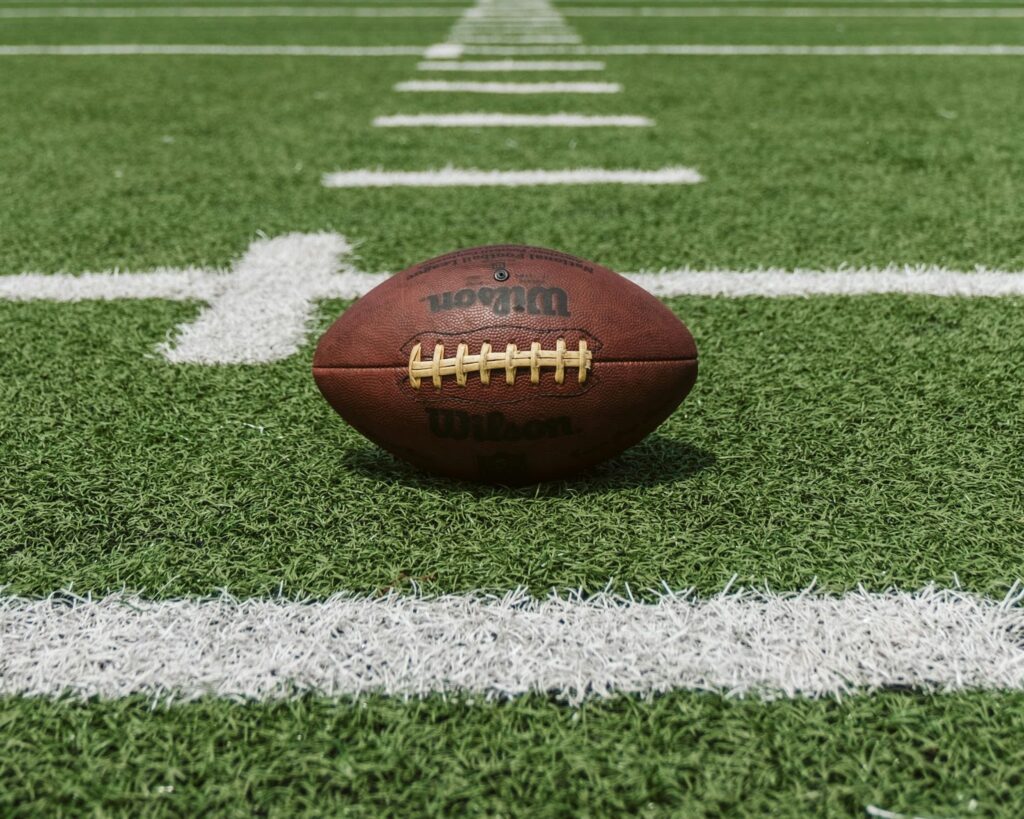
This may involve incorporating flexible seating arrangements, interactive fan zones, and improved connectivity to provide a unique and immersive experience for spectators.
On the player side, customization options for training spaces and adaptable playing surfaces will be in demand.
Conclusion
State-of-the-art indoor football field buildings have transformed the way the game is played and experienced. These modern facilities not only provide a controlled environment for training and matches but also enhance player performance and safety.
Through the innovative use of materials, technologies, and sustainable practices, the industry continues to push the boundaries of what is possible.
Looking ahead, smart technologies and the evolving needs of players and spectators will shape the future of indoor football field buildings, creating even more extraordinary experiences for all involved.
SteelCo has more than 23 years of experience in dropshipping customizable steel building materials for indoor sports complexes and recreational facilities across the country. Our team of experts can assist you with all the necessary building materials, designs, permits/licenses, and stamped engineering plans, ensuring that your ideas are brought to life. Learn more about our services.
———————
Frequently Asked Questions
What are the dimensions of the indoor football pitch?
The standard size for an indoor football pitch is 42 meters long and 22 meters wide. However, there are variations allowed within a range of regulatory measures. The minimum size is 15 meters by 25 meters, while the maximum is 42 meters by 25 meters.
What material is an indoor football pitch?
An indoor football pitch commonly has artificial turf on the surface, made from synthetic fibers to mimic natural grass. The turf is filled with granules, typically grey or green, for cushioning and is laid over sand and granular underlay for stability and drainage. The enclosure of the pitch has material coverings like tarpaulin or glass fiber, and the sides can have a retractable design.
Can I use a steel building for indoor soccer fields?
Steel buildings are a popular and practical choice for indoor football fields due to several advantages. These buildings feature clear-span designs with large, open spans that don’t require interior support columns. Additionally, they offer strong resistance to damage from impacts, weather conditions, and heavy use.
Check out these related articles:


